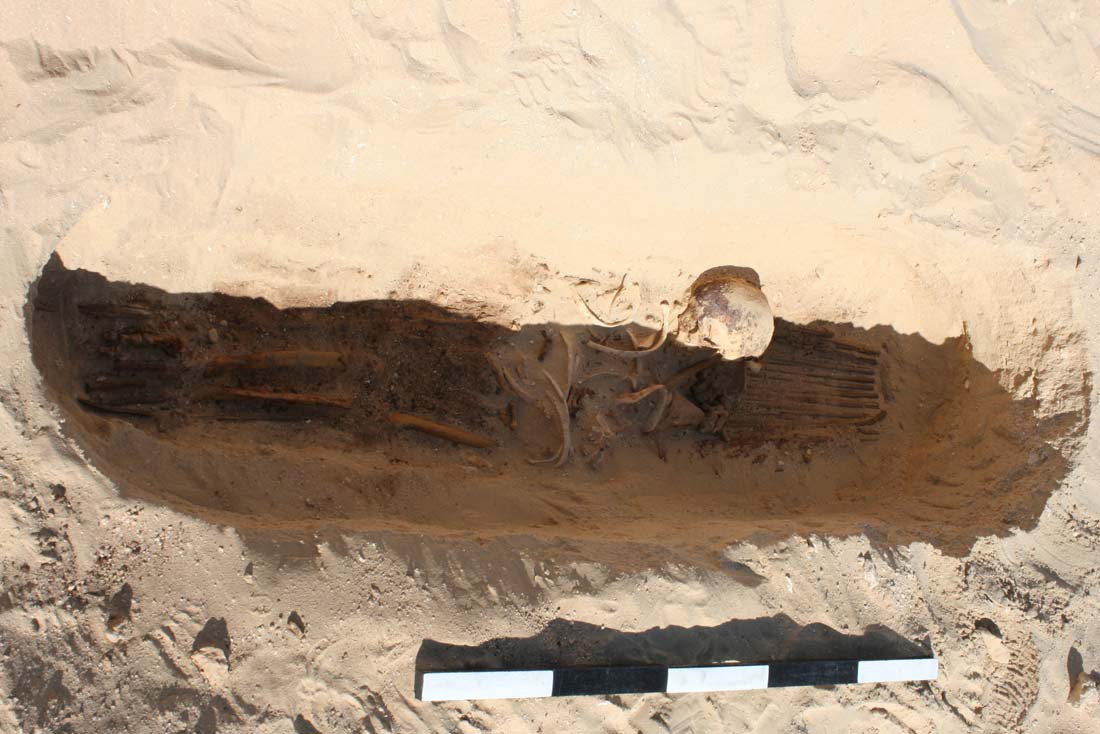In Photos: Ancient Egyptian Skeletons Unearthed
Magical burial?

Archaeologists have discovered two ancient Egyptian skeletons, dating back more than 3,300 years, which were each buried with a toe ring made of copper alloy, the first time such rings have been found in ancient Egypt.
One of the two, a man who lived more than 3,300 years ago and died around the age of 35-40, was buried in textile and plant-stem matting and a copper alloy toe ring on his right foot. Researchers believe that he likely wore the ring while he was still alive. They note that he suffered a number of injuries during his lifetime, including several broken ribs and fractures of his left radius, right ulna, right foot and right femur. The ring may have been a magical attempt to heal these injuries. His burial was disturbed by tomb robbers.
Toe Ring

This copper alloy ring was found on the second toe of the male's right foot, the same foot that suffered a fracture when he was alive. His right femur was also fractured and never healed properly causing him great pain.
Fashion or Magic?

A close-up view of the copper alloy ring on the male skeleton excavated in Egypt in 2011. In 2012, archaeologists found a second individual with a copper alloy ring originally on one of their toes, the sex of that person is undetermined. The question researchers face is were these rings worn for fashion or magic?
Ancient City

Both skeletons were found in a cemetery just south of the ancient city of Akhetaten, whose name means "Horizon of the Aten." Shown here, a ruined ancient city of Akhetaten under sunset at el-Amarna (the modern-day name for the city).
Built by King Tut's Dad

Now called Amarna, the city of Akhetaten was a short-lived Egyptian capital built by Akhenaten a pharaoh who tried to focus Egypt's religion around the worship of the sun disc, the "Aten." He was also likely the father of Tutankhamun. Here, the first ever facial reconstructions of King Tut using CT scans of his mummified remains. The pharaoh's reconstructed facial composition turned out to be strikingly similar to ancient portraits of Tut.
Ancient City Ruins

Another image of the ruined ancient city of Akhetaten under sunset at el-Amarna, built by King Tut's dad, Egypt's heretic king Akhenaten. After Akhenaten's death, this attempt to change Egyptian religion unraveled, as his successors denounced him and the city became abandoned. Even so, Anna Stevens, the assistant director of the Amarna Project, said the newly discovered rings are unlikely to be related to the religious changes Akhenaten introduced.
Get the world’s most fascinating discoveries delivered straight to your inbox.



